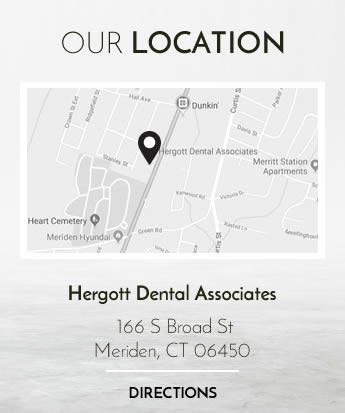
Your good health depends on taking excellent care of your teeth. Not only does proper dental care protect your oral health, but it also has a major impact on your overall health. Routine brushing and flossing are just the start. Establishing a relationship with a good general dentist is a vital part of taking care of both your dental health and your general health.
The focus of general dentistry is to stop minor dental problems before they become large health issues. While many dentists now offer cosmetic and restorative treatments, the main responsibility of a general dentist is preventative. Treating cavities, performing root canal treatment, and performing regular cleanings and examinations are some of the important things services by a general dentist.
Even if you take vigilant care of your teeth, only a qualified dentist or hygienist can remove the plaque and tartar that forms around and below your gum line. Regular checkups allow your general dentist to detect problems that could potentially lead to more serious issues. Caught in the early stages, potential trouble like gingivitis or periodontitis can be successfully treated before they become bigger concerns. General dentistry procedures like scaling, root planning, and root canal treatment can be used to save infected teeth.
Prevention is the key to a healthy smile. Taking proper care of your teeth at home and keeping a regular schedule of cleaning and exam appointments with your general dentist will go a long way towards saving your smile for years to come.
We look forward to seeing you in our Meriden dental office

At least twice a year, you need to schedule an appointment with your dentist. These visits allow your dentist to assess you oral health, address any concerns you have, and look for signs of problems. Protecting your teeth and gums is a partnership between you and your dentist. For the best results, follow these helpful hints:
Find the right dentist in Meriden
Selecting a provider and dental office that fits your personality will make you more likely to keep your appointments.
Provide an accurate health history
Although your dentist’s primary concern is your mouth, overall wellness can impact your dental health. For example, chronic health issues like diabetes and HIV can increase your risk for gum disease.
Bring a list of current medications
Your dentist needs to know the names and dosages of any medicine you take regularly. Certain medications, such as pain relievers, allergy medicines, and anti-depressants, can cause dry mouth, which may make you susceptible to dental problems.
Report any issues right away
Sometimes, you may develop a toothache or notice bleeding gums between your visits. Don’t ignore these symptoms because they may indicate bigger problems. The longer you wait to address any issues, the more time and money you will lose.
Share your fears
For some people, dental visits cause anxiety or fear. Let your dentist know exactly what worries you. Most doctors want you to feel relaxed and comfortable, so they will take time to answer your questions and help you feel at ease.
We treat patients from Meriden and the surrounding area

Excellent dental care protects not only your oral health but also your general health. You may think brushing and flossing are enough to keep you safe from decay and disease, but routine care and examinations by a good general dentist are also an important and necessary part of taking care of your oral and general health.
A general dentist plays a vital role in identifying and treating minor problems before they become major ones. The primary focus of a general dentist is preventative care. Several essential services provided by a general dentist include:
Detecting and treating potential problems early may mean the difference between losing and saving an infected tooth. Caught early, gingivitis or periodontitis can be stopped and treated before becoming more serious problems.
A general dentist can treat your entire family, from the youngest child to the more senior members. It is your general dentist’s responsibility to oversee the diagnosis, treatment and overall coordination of all your dental health needs. Should you require specialized oral care, your general dentist can work with specialty dentists to ensure you receive the best possible care.
To guarantee the longevity of your oral health, look to a qualified general dentist for excellent dental care. A regular schedule of exams and cleanings by your general dentist
If you live in the Meriden area contact us today

What Are Dental Sealants
Dental sealants are thin plastic coatings that are applied onto the surface of the teeth in order to protect them from bacteria and acids that cause tooth decay. The sealant forms a protective barrier over the enamel (the hard outer layer of your teeth) by filling in small grooves or pits where food particles can get trapped and cause plaque buildup. This simple preventive measure can go a long way in protecting your teeth from cavities.
Importance of Dental Sealants in Maintaining Oral Health
According to the Centers for Disease Control (CDC), dental sealants have been shown to reduce tooth decay by up to 80% in school-aged children who receive them on their permanent molars. This statistic alone shows just how effective this preventive measure is at maintaining oral health.
Dental sealants provide an extra layer of protection against bacteria and acids that normal brushing and flossing cannot reach. Dental sealants also have long-lasting effects when applied properly with regular check-ups with a dentist ensuring any damage or wear is repaired quickly before it leads further damage or decay.
In addition to its effectiveness, dental sealant is also cost-effective as compared to other dental treatments. It is significantly cheaper than getting a filling or a crown, making it a viable option for most people.
Dental sealants are an essential tool in maintaining oral health. By providing an extra layer of protection against tooth decay and cavities, they can help you keep your teeth healthy and prevent more costly dental procedures down the road.
Types of Dental Sealants
There are two main types of dental sealants: resin-based and glass ionomer-based. Resin-based sealants are more commonly used due to their durability and longevity. Glass ionomer-based sealants are typically used for baby teeth or as a temporary solution until permanent restorations can be placed.
How Dental Sealants Work
The application process for dental sealants involves cleaning and preparing the tooth surface before applying the resin material. Once applied, the material bonds directly to the tooth surface, creating a protective barrier that lasts for several years. Dental sealants work by forming a physical barrier between the grooves and pits on tooth surfaces where bacteria can accumulate, effectively preventing cavities from developing in these areas.
They also help prevent future damage by sealing out bacteria that can cause further decay. By reducing your risk of developing cavities, dental sealants can save you time and money in costly restorative treatments down the line.
Benefits of Dental Sealants
Prevention of tooth decay and cavities
One of the primary benefits of dental sealants is their ability to prevent tooth decay and cavities. Sealants are particularly effective at protecting the molars and premolars, which are the teeth located in the back of your mouth that are most susceptible to decay. By sealing grooves and crevices in these teeth with a resin material, sealants prevent food particles and bacteria from becoming trapped and causing decay.
Protection for vulnerable teeth surfaces
Dental sealants can also provide protection for teeth surfaces that are especially vulnerable to damage. This may include teeth that have thin enamel, as well as those that have undergone restorative dentistry procedures such as root canals or fillings. Sealants create a barrier between these surfaces and the outside environment, shielding them from harmful bacteria, acids, and debris.
Cost-effective preventive measure
Perhaps one of the biggest advantages of dental sealants is their cost-effectiveness when compared to other types of preventive dental care. While regular cleanings, x-rays, and fillings can quickly add up in terms of out-of-pocket costs or insurance co-pays, dental sealant application is relatively inexpensive.
In fact, many insurance plans cover some or all expenses related to this procedure for children under a certain age. Additionally, because sealants can last for several years with proper care, they provide long-term value for patients seeking to maintain optimal oral health without breaking the bank.
Who Needs Dental Sealants?
Children and Teenagers
The American Dental Association (ADA) recommends that children receive dental sealants as soon as their permanent molars come in, usually around age 6. At this age, the teeth are vulnerable to decay and cavities because they have deep grooves and pits that trap food and bacteria. Applying dental sealants to these teeth can prevent up to 80% of cavities.
Teenagers who have not had dental sealants before can still benefit from them. As children’s molars continue to grow until about age 14, teenagers who may not have received the treatment at a younger age should consider getting sealants on previously untreated teeth.
Adults with Deep Grooves or Pits in Their Teeth
Even adults can benefit from dental sealants if they have deep grooves or pits in their teeth. These areas can easily trap food particles and bacteria, leading to tooth decay and cavities. By applying a layer of dental sealant over these areas, adults can significantly reduce their risk of developing tooth decay.
It is important to note that some adults may already have fillings in these areas, which would make it impossible or impractical to apply dental sealant. Your dentist will be able to advise you on whether or not you are a good candidate for this procedure.
Individuals with a High Risk for Tooth Decay
Individuals who are particularly susceptible to tooth decay due to factors such as poor oral hygiene habits, dry mouth syndrome or other health issues should consider getting dental sealants applied. This preventive measure helps protect vulnerable areas of the teeth from bacteria that could cause further damage. Dental professionals recommend scheduling regular checkups for individuals with high risks of tooth decay throughout their lives since applying new layers of sealant is necessary every few years depending on several factors including the type of sealant used and the individual’s oral hygiene regimen.
The Procedure for Applying Dental Sealants
Preparation before the procedure
Before applying dental sealants, your dentist will examine your teeth to determine if they are healthy and free from decay. They may also clean your teeth thoroughly to remove any plaque or debris that could interfere with the application of the sealant. If you have existing fillings or cavities, your dentist may recommend treating them first to ensure optimal oral health.
Application process and materials used
The application process for dental sealants is straightforward and typically takes only a few minutes per tooth. First, your dentist will dry the surface of the tooth and apply an acid solution that roughens up the enamel. This helps the sealant adhere more effectively to the tooth surface.
Next, the dentist will rinse off the acid solution and dry the tooth once again before applying a thin layer of dental sealant material onto each tooth’s chewing surface. The material used for dental sealants can vary slightly depending on what type of sealant is being applied.
However, most dental sealants are made from either resin or glass ionomer cement material. Resin-based sealants tend to be more durable but require a dry surface during application, while glass ionomer cement-based materials can be applied to slightly damp surfaces but may not last as long.
Aftercare instructions
After having dental sealants applied, it is important to take care of them properly to ensure their longevity and effectiveness at preventing tooth decay. Your dentist will likely give you specific instructions on how best to care for your newly sealed teeth.
Generally speaking, after getting dental sealants applied you should avoid eating anything hard or sticky for at least 24 hours afterwards as this could potentially dislodge them. You should also make sure you brush and floss regularly as normal to maintain good oral hygiene practices overall.
Additionally, you may want to consider avoiding foods high in sugar as these can contribute to the development of tooth decay even if you have dental sealants applied. It is important to continue attending regular check-ups with your dentist so they can monitor the efficacy of your dental sealants and make any necessary adjustments.
Tips for Maintaining Dental Sealant Effectiveness
Regular brushing and flossing
One of the most effective ways to keep dental sealants in good condition is by practicing proper oral hygiene. Brushing your teeth at least twice a day and flossing regularly can help remove food particles and bacteria that can affect the sealant’s effectiveness. Use a soft-bristled toothbrush to avoid damaging the sealant surface, and choose fluoride toothpaste to strengthen your teeth.
Avoiding hard or sticky foods
While dental sealants are designed to provide a protective barrier against decay-causing bacteria, they are not invincible. Avoid biting down on hard objects like ice, hard candy or pens, as this can chip away the protective layer. Sticky foods such as caramel or taffy can also get stuck in between teeth and make it difficult to clean effectively.
Regular check-ups with a dentist
It’s important to schedule regular appointments with your dentist even if you have dental sealants in place. A dentist will check for any signs of decay or wear and tear of the sealant material during routine cleanings. This helps ensure that any issues are detected early, before they escalate into something more serious that requires extensive treatment.
Taking care of dental sealants involves being diligent about oral hygiene practices such as brushing, flossing while also avoiding certain foods that could damage them. Consistent check-ins with your dentist will help catch any issues early on so that you can maintain healthy teeth over time.
Schedule an Appointment
Dental sealants are an important preventive measure that can help to maintain good oral health. As outlined in this article, dental sealants are a protective coating that is applied to the teeth, usually the molars and premolars, to prevent tooth decay and cavities. They are particularly useful for children and teenagers who may not have developed good oral hygiene habits yet, as well as adults with deep grooves or pits in their teeth or those who have a high risk for tooth decay.
By investing in dental sealants, individuals can save money over time by avoiding expensive dental procedures such as fillings or root canals. Additionally, dental sealants provide long-lasting protection for teeth surfaces that are vulnerable to decay.
Regular brushing and flossing along with regular check-ups with a dentist can help maintain the effectiveness of dental sealants. While there may be some potential risks associated with the application of dental sealants such as allergic reactions or possible damage to existing fillings or decayed teeth, these risks tend to be low.
It is clear that dental sealants play an important role in maintaining good oral health. By taking proactive steps such as investing in dental sealants and practicing good oral hygiene habits, individuals can enjoy strong and healthy teeth for years to come.
Do not wait any longer. Book your appointment now and achieve the smile you have always wanted. Dr. Hergott is accepting new patients from Meriden and the surrounding area.

Most people know that keeping your mouth clean is the best way to have an attractive and healthy smile. However not so many will be aware of the benefits to general health. Having healthy teeth and gums helps protect your overall health.
What Is Oral Health?
Oral health is concerned with the condition of any of the structures in your mouth, including your teeth, gums, tongue and all your oral tissues.
How Is Oral Health Related to Overall Health?
When your teeth and gums are healthy then it’s much easier to eat a varied and nutritionally sound diet. Choosing foods that are good for your teeth, for example those that are low in sugar, will also benefit your general health. Having a nice smile helps boost self-esteem, and good oral health decreases the risk of bad breath. It’s also much easier to speak clearly when you have all your teeth.
Which Oral and General Health Conditions Are Linked?
Oral health has been connected to a number of different general health issues. Clinical studies have found links between gum disease and diabetes. For example, uncontrolled diabetes can increase the amount of glucose in the saliva, increasing the risk of gum disease. Conversely gum disease causes bleeding gums that allow bacteria in the mouth to enter into the bloodstream where it’s thought they can create new sites of inflammation, making it more difficult to control blood sugar levels. In addition diabetics find it more difficult to heal. Gum disease has also been linked to heart disease, and people with unhealthy gums could be at increased risk of developing heart issues.
How Can I Achieve Good Oral Health?
It’s important to visit your family dentist in Meriden as often as recommended. Book professional tooth cleanings at the same time as this will reduce bacteria in the mouth, helping to keep your gums healthy and strong. People with diabetes or other medical conditions that compromise their immune system may need to visit their Meriden general dentist more frequently.














